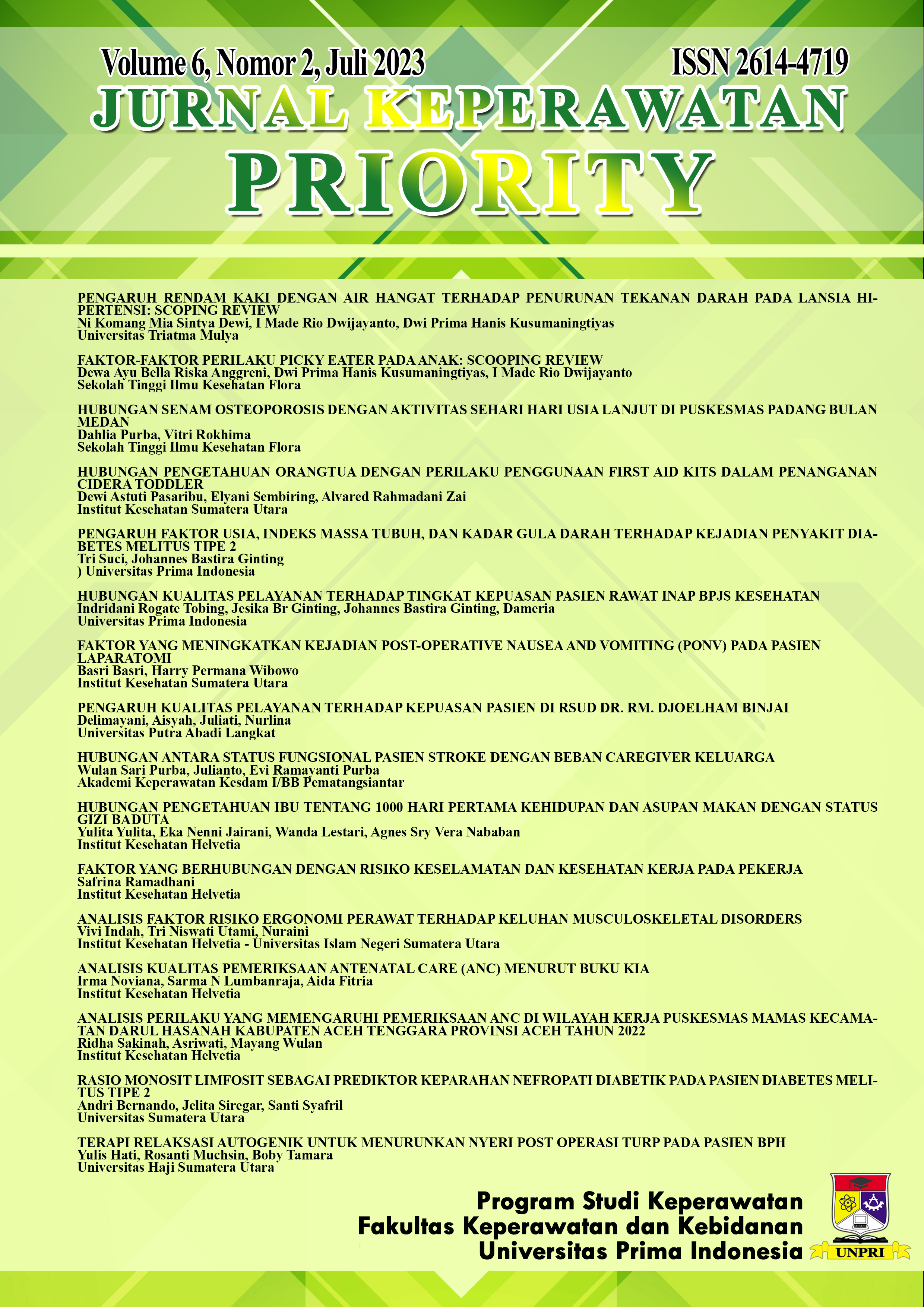FAKTOR-FAKTOR PERILAKU PICKY EATER PADA ANAK: SCOOPING REVIEW
DOI:
https://doi.org/10.34012/jukep.v6i2.3592Keywords:
factors, picky eater, behavior, childrenAbstract
Picky eater or better known as having difficulty eating, is a problem in food harvesting in an effort to meet nutritional intake in children. Based on research in several countries, it can be seen that the prevalence of picky eaters or difficulty eating in children is quite high. Research in the USA reports that 50% of 3,022 toddlers have difficulty eating and around 20% -60% of parents say that their toddlers eat not optimally. In London, 17% of children have a low appetite, while another 12% are picky eaters. The prevalence of picky eaters in Singapore with frequent classification was 49.6% of 407 respondents, the Jakarta area was 46.9%, 59.5% of children aged 6-60 months in Depok, and 82% of children aged 3-6 years in Bekasi Regency is experiencing picky eater. Purpose: to be able to find out the factors that cause picky eater behavior. Literature review uses secondary data taken from Google Scholar. The results of this literature review present articles regarding the factors that cause picky eaters. There are factors that cause picky eaters. One of them is mother's knowledge about nutrition with picky eater behavior.
Downloads
Published
How to Cite
Issue
Section
License
Copyright (c) 2023 Dewa Ayu Bella Riska Anggreni, Dwi Prima Hanis Kusumaningtiyas, I Made Rio Dwijayanto

This work is licensed under a Creative Commons Attribution 4.0 International License.
Authors who publish their manuscripts through the Journal of Keperawatan Priority agree to the following:
- Copyright to the manuscripts of scientific papers in this Journal is held by the author.
- The author surrenders the rights when first publishing the manuscript of his scientific work and simultaneously the author grants permission / license by referring to the Creative Commons Attribution 4.0 International License to other parties to distribute his scientific work while still giving credit to the author and the Journal of Journal Keperawatan Priority as the first publication medium for the work.
- Matters relating to the non-exclusivity of the distribution of the Journal that publishes the author's scientific work can be agreed separately (for example: requests to place the work in the library of an institution or publish it as a book) with the author as one of the parties to the agreement and with credit to sJournal ofJournal Keperawatan Priority as the first publication medium for the work in question.
- Authors can and are expected to publish their work online (e.g. in a Repository or on their Organization's/Institution's website) before and during the manuscript submission process, as such efforts can increase citation exchange earlier and with a wider scope.

















